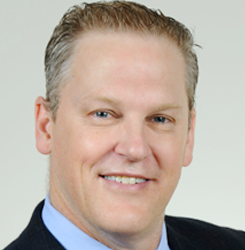LOD-238-00
Lasers in Contemporary Implant Dentistry - Part 2
Dr. Glenn van As
Lasers in Contemporary Implant Dentistry - Part 2
LOD-238-00
Dr. Glenn van As
Part 2 of 2: Lasers in Contemporary Implant Dentistry by Dr. Glenn van AsPart 1 (LOD 237-00) of this two part series will look at four things that can happen with laser tissue interactions: Scatter, Transmission (or Refraction), Absorption, and Reflection. This will help us understand the physics and science of lasers. We will look at the several different wavelengths available for implant dentistry, and which one might be appropriate for your practice. This lecture will present a protocol that will help you determine where lasers can fit in to implant dentistry. And, finally, we will discuss how lasers can impact before you place your implant, and during the placement of your implant.Part 2 (LOD 238-00) of this two part series will discuss the role of lasers after the implant has been placed. We will demonstrate how it can be used to improve healing. It can be used during uncovery. It can be used in periimplant tissue removal, and even in the exciting world of periimplantitis. Clinical cases will be presented showing hard-tissue lasers being used for decortication as an alternative to traditional means. We will focus on why an electrosurge may be damaging to your implants, and may cause you more problems than benefits, and why a diode-laser may be your treatment of choice. This lecture will conclude with what may be the future of lasers, and how Erbium lasers might be able to be used in periimplantitis to not only remove biofilms and surfaces like TiUnite, but to actively allow for reosseointegration to occur.
LOD-237-00
Lasers in Contemporary Implant Dentistry - Part 1
Dr. Glenn van As
Lasers in Contemporary Implant Dentistry - Part 1
LOD-237-00
Dr. Glenn van As
Part 1 of 2: Lasers in Contemporary Implant Dentistry by Dr. Glenn van AsPart 1 (LOD 237-00) of this two part series will look at four things that can happen with laser tissue interactions: Scatter, Transmission (or Refraction), Absorption, and Reflection. This will help us understand the physics and science of lasers. We will look at the several different wavelengths available for implant dentistry, and which one might be appropriate for your practice. This lecture will present a protocol that will help you determine where lasers can fit in to implant dentistry. And, finally, we will discuss how lasers can impact before you place your implant, and during the placement of your implant.Part 2 (LOD 238-00 - sold separately) of this two part series will discuss the role of lasers after the implant has been placed. We will demonstrate how it can be used to improve healing. It can be used during uncovery. It can be used in periimplant tissue removal, and even in the exciting world of periimplantitis. Clinical cases will be presented showing hard-tissue lasers being used for decortication as an alternative to traditional means. We will focus on why an electrosurge may be damaging to your implants, and may cause you more problems than benefits, and why a diode-laser may be your treatment of choice. This lecture will conclude with what may be the future of lasers, and how Erbium lasers might be able to be used in periimplantitis to not only remove biofilms and surfaces like TiUnite, but to actively allow for reosseointegration to occur.
INT-051
Advances in Laser Technology in Dentistry
Dr. Glenn van As
Advances in Laser Technology in Dentistry
INT-051
Dr. Glenn van As
English
Advances in Laser Technology in Dentistry Dr. Glenn van As Vancouver, British Columbia General Dentist

